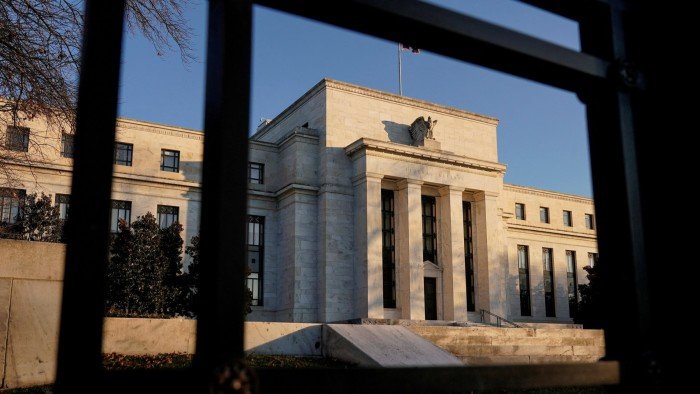Unlock the Editor’s Digest for free
Roula Khalaf, Editor of the FT, selects her favourite stories in this weekly newsletter.
The writer is an FT contributing editor
This month the Federal Reserve decided it would cut its own workforce by a tenth over the next several years. The move has been reported as a way to find savings at the Fed before the so-called Department of Government Efficiency knocks on the door. That may be right, but the Fed has another problem it doesn’t like to talk about: it’s operating at a loss. On purpose.
When a commercial bank lends you money, it’s adding both an asset and a liability to its own balance sheet. The asset is the loan itself, which you will repay over time. The liability is brand-new deposits, which it marks up from scratch in your account. Those deposits are brand-new money.
The Federal Reserve is a special bank, but it’s still a bank. When it adds assets to its own balance sheet like treasuries or mortgage-backed securities, it matches those with liabilities — either brand-new physical dollar notes or brand-new deposits. We call deposits at the Fed reserves, but they’re just deposits. There is no magic to this, no special money creation. It’s just banking.
The point of a commercial bank is to operate at a profit, keeping returns on assets higher than the costs of liabilities. But macroeconomists have come to believe that this just isn’t true of the Fed. It issues dollars and can always issue more, therefore losses don’t matter. But this is an assumption, not a law of physics. What it misses is the political importance of seigniorage — the profit to the sovereign nation’s coffers for manufacturing money.
Until 2023, the Fed consistently made a profit. The returns on its assets were higher than the costs of its liabilities. It returned some of this profit to the government, demonstrating its strength both as a bank and as political institution. It is easier to remain independent of the White House when you’re the one paying for the privilege.
The Fed’s liabilities used to cost it nothing. First, even though physical dollar notes are a liability for the Fed, they don’t pay interest. Second, commercial banks have always had to hold some of their assets as deposits at the Fed — reserves. The Fed didn’t pay interest on these either, until a 2006 law, implemented during the beginning of the Global Financial Crisis in 2008.
Traditionally, bankers have felt about holding reserves the way children feel about taking a bath. They’re against it, but that’s not really the point, because it’s not their decision. Reserves aren’t supposed to be profitable — they’re supposed to be safe. Once the Fed started paying interest on reserves, however, this necessity didn’t seem that painful. Banks got used to holding a safe asset with a small but guaranteed return. They started holding way more reserves than they needed to.
Now the Fed is stuck in an operating system it calls the ample-reserves regime, one where bankers love bath time. Under this regime, the Fed carries out interest-rate policy by moving the interest it pays on reserves up and down. It decides, essentially, how much to lose on its liabilities. This isn’t quantitative easing in an emergency, it’s just normal operations. In 2023, the Fed reported a loss of $114bn; in 2024, $78bn.
This is a departure without a discussion. The reason we assume the Fed cannot possibly fail is that Congress will always protect its central bank with the promise of new capital in an emergency. Now, in perfectly normal years, the Fed can incur losses when it raises its rates.
The Fed books these losses as what it calls deferred assets, a note of how much profit it will have to earn back before it can start paying its contribution to the Department of the Treasury again. This is a privilege unique to the Fed, a tacit understanding that there will be lean and fat years, which will balance each other out as rates fall again in the future.
The profit the Fed makes on issuing dollar cash may be going away as well. Cash continues to decline as a share of total payments. The White House and Republicans in Congress have made clear that the Fed is not to replace dollar cash on its own balance sheet with any other kind of liability, such as a digital currency.
At the same time, a bill in the Senate would instead bring stablecoins providers into a regulatory regime where they have to hold assets against every coin in either Treasuries, reserves at the Fed, insured bank deposits, or treasury repurchase agreements. This means over the long term, the Fed’s profits on cash are moving to the private sector.
None of this mattered in normal times, when the Fed was supported by a consensus with Congress and the White House on the norms of monetary policy. But these are not normal times. The Federal Reserve is a bank. And we should be clear about exactly whose bank it is, whether Congress and the White House expect a profit, and what they plan to do about a loss.

